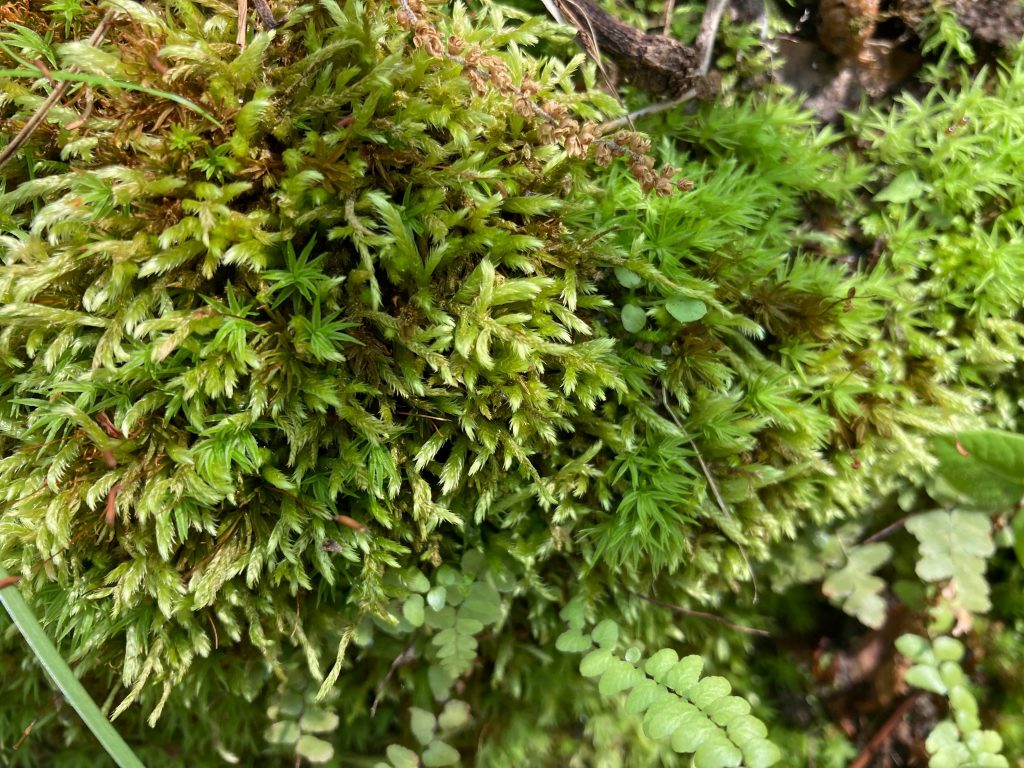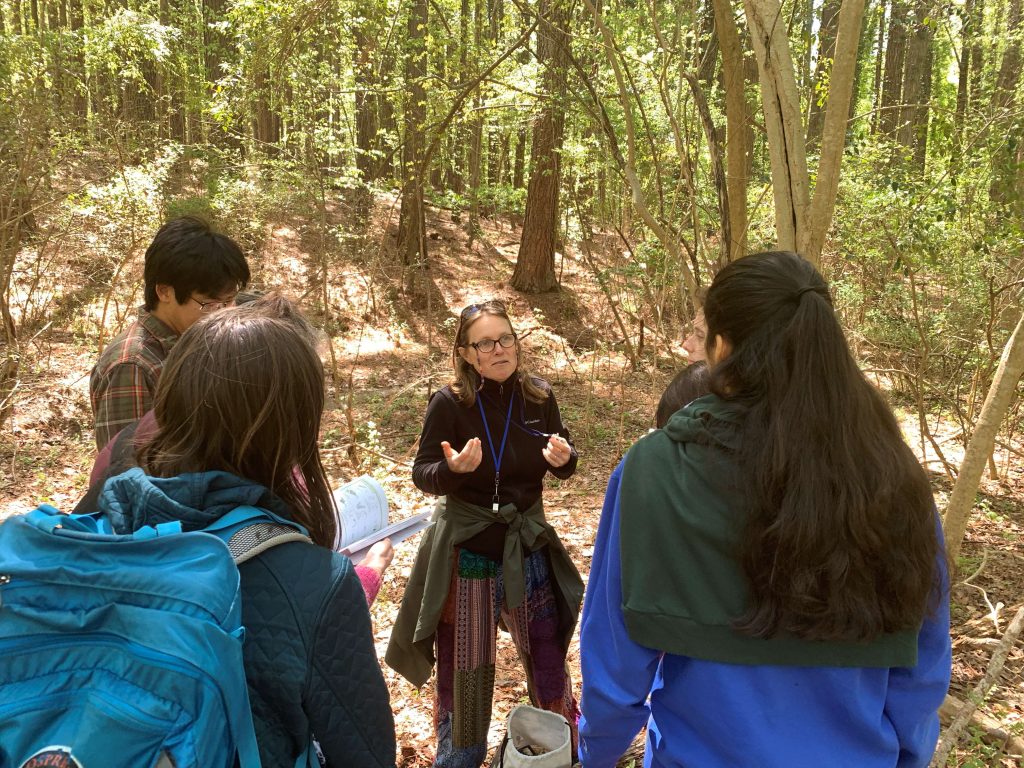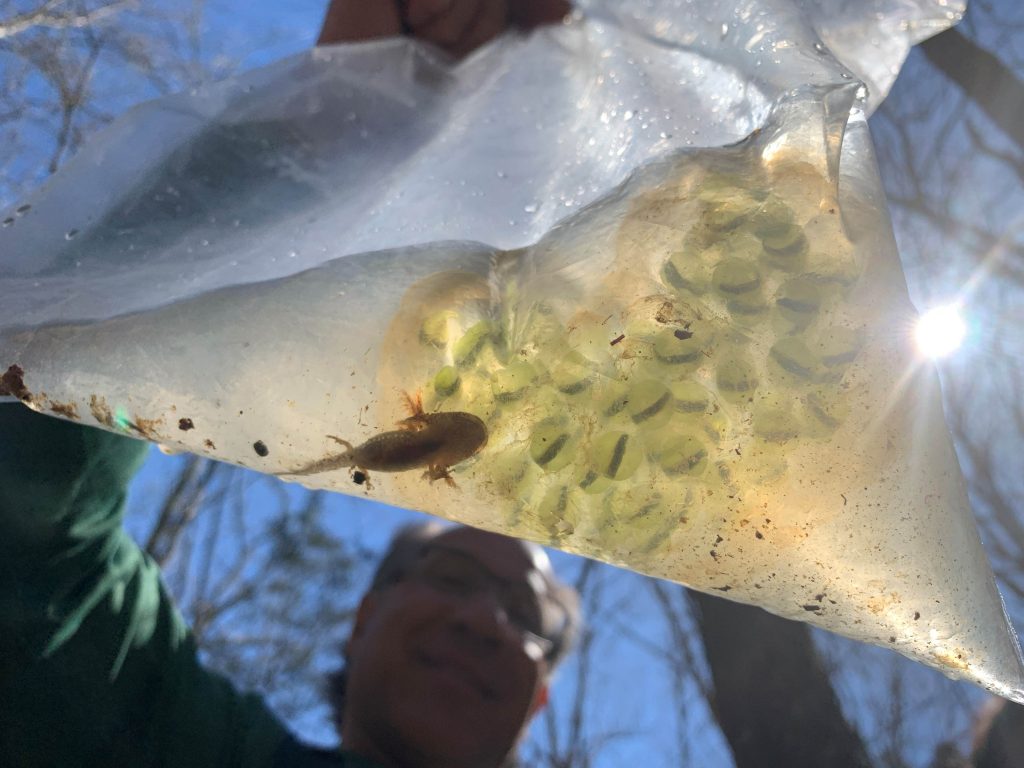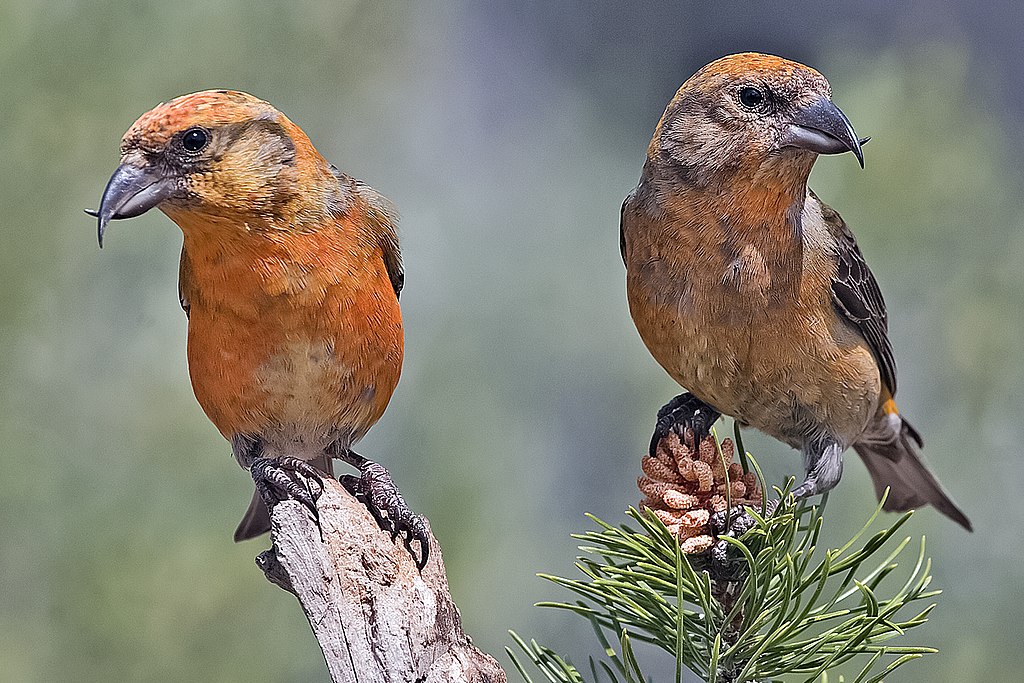Imagine lying on your back, legs flailing, unable to flip yourself over. To make matters worse, there is a rope attached to your head that you can’t remove. Meanwhile, a giant is prodding at you with a long metal stick, and you can’t figure out if she’s trying to hurt you or help you.
Earlier this semester, I was that giant.

I was in the entomology lab in the basement of the biology building on a Friday night, photographing insects under a microscope. One of them, so tiny that I could barely see it with the naked eye, had ended up on its back with its beak-like mouth caught on a miniscule thread of lint. I was using a pin to try to remove the lint, but my efforts were dragging the insect haphazardly across the leaf it was on, and I gave up out of fear of hurting it. Under the microscope, the insect’s situation was dramatic and hard to watch, but when I walked to the Duke Gardens later that night to release it, it was just a dark speck in my palm.

Photographing insects for the entomology class I am taking this semester gives me perspective on a world that operates on a smaller scale, with obstacles humans don’t have to contend with—like pieces of lint ensnaring our mouths. But in order to photograph insects, I need them to stay reasonably still. Fred Nijhout, Ph.D., who teaches the entomology course, taught us that you can keep live insects in a refrigerator temporarily, which doesn’t kill them but slows their metabolism down significantly, making them easier to photograph. In the past few months, I have spent many hours with refrigerated insects.
As much as I love insects, I was terrified of this class. I thought it would require making a physical insect collection—which, in turn, would require me to kill insects, and I simply didn’t think I’d be able to do that. Fortunately, there was an option to create a photography collection with living insects instead, which is why I’ve spent so much time catching, photographing, and releasing insects over the past several weeks. We need to collect or photograph twelve insect orders and twenty families, which has led to some unusual situations — like sheer delight upon finding a termite or cockroach. (Both represent orders that, until recently, I didn’t have in my collection.)

The first insect I refrigerated was a tiny lace bug I found wandering across my pants one afternoon. I coaxed it onto my hand and ran to my dorm to get a vial. (I have since learned to keep small containers with me nearly everywhere I go.) I put the lace bug inside the vial and stuck it in the common room refrigerator overnight, wrapped discreetly in a plastic bag. I had serious misgivings. Could such a small creature really survive an entire night in a refrigerator? And what if someone found it and threw it away? The next morning, I retrieved it with much apprehension. The insect wasn’t moving. It seemed somehow lighter, more desiccated, and I was certain it was dead. What had I done?

I brought the lace bug to class and put it back in the refrigerator. Later that day, Nijhout showed me how to photograph it with the microscope camera. It remained motionless while we maneuvered it this way and that. But then, just as we were about to take another picture, one of its tiny antennae wiggled. It was alive. After all those hours in the refrigerator, it was still alive. I won’t soon forget that wiggling antenna. It felt miraculous in the most literal sense of the word.
Watching a refrigerated insect “wake back up” never ceases to amaze me. When a butterfly that was lying on its side suddenly flaps its wings and rights itself, or a curled-up damselfly begins to twitch after several minutes of total stillness, or a lace bug regains the ability to wiggle an antenna, I always feel like I am witnessing something remarkable. But my favorite part of the whole process might be what happens next.
After I’ve finished photographing an insect, I always try to release it, ideally wherever I found it. It is always a relief to put them back where they belong, alive and moving and hopefully unharmed. But it can be hard to let them go. Spending enough time with one creature, any creature, turns it into an individual, and once you’ve become acquainted with an individual, it’s hard not to care what happens to it. After I release an insect, I will never know its fate. But if cooperating with refrigeration and photography is the insects’ part of the deal, then releasing them afterward is mine.

Sometimes, I make more literal deals with the insects. One day, I caught an ailanthus webworm moth, a bright orange insect with black and white markings, and it kept reviving before I could get a good picture. Each time I relegated it back to the refrigerator, I felt worse and worse. So I put the moth back in the fridge one more time, promising that it would be the last, and walked to the dining hall, where I squirted mango syrup onto a napkin. I tried to be subtle so no one would ask me why I was putting it on a napkin instead of in a cup of iced tea. Oh, I’m just feeding the refrigerated moth in the insect lab. Nothing unusual. Have a great day! Back in the lab, I dabbed some syrup onto the back of my notebook and offered it to the moth, partly as a reward for its patience, partly to assuage my own guilt, and partly as a last-ditch attempt to keep the moth still while I photographed it. The moth became completely focused on lapping up the syrup, but I had failed to account for its feeding process, an exuberant dance that was anything but still. Nevertheless, a deal is a deal—that moth wasn’t going back in the fridge. I walked across campus to the spot where I’d found it, and it kept eating the sugary treat the whole time. For once, my photography subject didn’t seem eager to leave.

The mango syrup retrieval mission probably isn’t the strangest thing I’ve done in pursuit of insects. One morning, I was standing outside in the pouring rain, already soaked and so no longer remotely concerned about getting wetter, and holding my arms above my head in an awkward position while I tried to remove the slippery cap from an insect container in order to catch a candy-striped leafhopper perched on a leaf above me.
Another time, our class was on a field trip on the Al Buehler Trail when I spotted a dainty insect almost floating through the sun-dappled swamp. Nijhout identified it as a phantom crane fly, and when I failed to catch it in a dignified manner from the boardwalk, I jumped into the mud and swooped my net, successfully capturing the cranefly. Back in the lab the next day, I found that the phantom crane fly revived even faster than the ailanthus webworm moth, seeming to regain full movement within moments of exiting the refrigerator. I snapped pictures using a lens that attaches to my phone, but just as I was about to return it to its container to release it, it drifted into the air, and—like a phantom—it disappeared. I never found it again.

Duke does not assign an Ethical Inquiry code to the entomology class, but I feel I have done more ethical inquiry in this class than any other. Is photography a worthy reason to risk an insect’s life? Is accidentally releasing a phantom crane fly in a dark room without food or water any better than killing it outright? Is killing insects an essential part of entomology? If so, when is it justified, and when is it not?
In class, we have learned about a series of groundbreaking experiments that strike me as twisted. In one, Stefan Kopec “ligated” caterpillars by tying a very tight string around them to see if either half would still molt. Spoiler: yes, the front half containing the brain. If you cut the brain out of the head and transplant it to the abdomen, then the back half will molt instead. Conclusion: the brain is essential for molting, but it doesn’t need to be attached to the rest of the nervous system. Another experiment involved scientists cutting cecropia moth cocoons in half with a razor blade and sealing each half with wax, followed by more brain transplantation (in this case, a transplanted brain does not make the back half emerge from the cocoon—unless you also transplant a piece of the thoracic gland). Yet another involved beheading two insects and attaching their necks with a capillary tube to see if injecting a hormone into one will prompt the other to molt as well (yes, it will). I hate even imagining these experiments, and I can’t picture myself ever performing them.
My apparent inability to kill insects even in the name of science might become a real problem if I want to study entomology after college. But when I question the value of certain experiments or feel guilty for refrigerating an insect, I am not acting as a scientist. I am acting as an older version of the fourth grader who watched in distress as her classmate ripped caterpillars’ heads off or the eighth grader staring at a circle of kids surrounding a beautiful cecropia moth, distraught from just imagining that someone might hurt it. (The moth was fine—the teacher got one of the kids to agree to protect it. I was not—she sent me to the bathroom to calm down and then sent my friend to check on me.)
At times, I take this concern for the hypothetical suffering of other beings entirely too far. In a cell biology lab this semester, our TA explained that the E. coli bacteria we were working with had had a very rough day: they’d gone through a process that left holes in their membrane, then been put on ice to prevent those holes from completely destroying them. Clearly feeling bad for bacteria is not a recipe for success, but wanting to minimize insects’ suffering seems more justifiable. There seems to be an important distinction between a child pulling caterpillars’ heads off for fun and a scientist tying strings around a caterpillar to answer specific scientific questions. But is the pursuit of knowledge alone enough of a justification for killing the creatures we study? I would have an easier time justifying an experiment that kills insects to advance human medicine or insect conservation.
Ultimately, the morality of killing insects may depend on a question we can never answer: “What does it feel like to be an insect?” I would not want to be shut in a refrigerator for several hours, prodded with a pin, or cut in half with a razor blade, so how can I justify doing that to an insect? I torture myself repeatedly with these thought experiments, but there is a glaring problem with my “golden rule” line of reasoning: I am not an insect. How can I imagine how refrigeration feels to a creature that can slow its metabolism to just 1%, as we learned in class? Perhaps my mom is right when she encourages me to think of these insect-chilling sessions as akin to medically induced comas or periods of peaceful rest rather than sustained torture sessions.

Where is the line between science and torture? On the flip side, where is the line between anthropomorphizing animals (problematic in science) and giving them the benefit of the doubt when it comes to sentience and capacity to feel pain? It’s not just our experience of the world, our umwelt, that is different from that of insects. We also have entirely different survival strategies. Humans are a K-selected species; we have few offspring but invest heavily into the survival of each individual. Insects, meanwhile, are r-selected; they have many babies, often hundreds or thousands, and many of them will die. If one lace bug can lay hundreds of eggs and many butterflies and moths live only a matter of days, then killing or saving a few insects probably has a negligible impact on the species as a whole. There are other initiatives, like reducing pesticide use, planting native flowers, and mowing lawns less frequently, that can benefit insects on a much larger scale. But the time and effort I spend keeping my refrigerated insects alive was never about protecting a species. It has always been about protecting an individual.

At first, my tendency to get attached to insects made it very difficult for me to justify refrigerating them. But seeing tiny creatures under a microscope is a powerful, intoxicating thrill. Maybe refrigeration is a fair compromise, a way to observe insects without killing them and to keep them safe until I let them go.

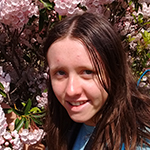
Post by Sophie Cox, Class of 2025



